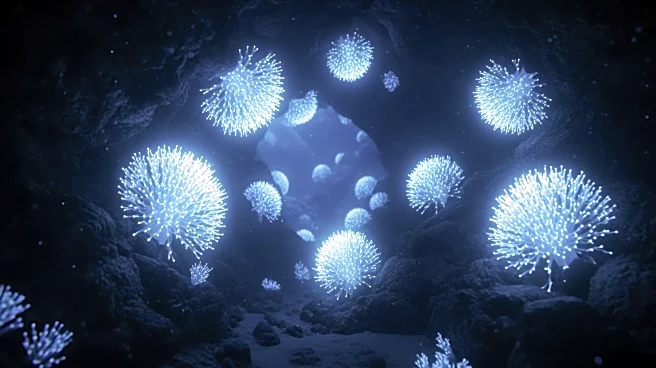What's Happening?
A scientist at Florida International University has developed a groundbreaking test that can detect elusive hammerhead sharks without direct observation. This method utilizes environmental DNA (eDNA) to
identify genetic material fragments in seawater, revealing the presence of these sharks. The test, created by marine biologist Diego Cardeñosa, aims to locate and protect endangered shark species, particularly smaller hammerhead species like the scalloped bonnethead, scoophead, and Pacific bonnethead. These species have suffered from overfishing, making them difficult to study and conserve. Cardeñosa's technique offers a new way to pinpoint their habitats and movements, which are currently poorly understood.
Why It's Important?
The development of this eDNA test is significant for marine conservation efforts, as it provides a non-invasive method to track endangered shark species. By identifying high-priority areas for conservation, this tool can help allocate resources effectively to protect these sharks. The decline of hammerhead populations due to overfishing has left them vulnerable, and understanding their distribution is crucial for implementing protective measures. Additionally, preserving these species is vital for maintaining biodiversity and evolutionary history, as they represent some of the most derived shark species. The test's ability to detect genetic material from water samples could revolutionize marine science and conservation strategies.
What's Next?
Cardeñosa's research focuses on identifying locations where these endangered sharks might still exist, such as Colombia's Uramba/Bahía Málaga National Natural Park. The next steps involve screening various locations along their distribution range from Mexico to Northern Peru to find these species. Conservation efforts will likely prioritize areas identified by the eDNA test as critical habitats. The research could also inspire broader applications of eDNA technology in marine conservation, potentially aiding in the protection of other endangered marine species.
Beyond the Headlines
The use of eDNA technology highlights the potential for innovative scientific methods to address conservation challenges. This approach not only aids in tracking elusive species but also preserves genetic information for future research. The ability to detect species presence from water samples could lead to new insights into marine ecosystems and biodiversity. Furthermore, the preservation of evolutionary history through the protection of these shark species underscores the ethical responsibility to prevent extinction and maintain ecological balance.












